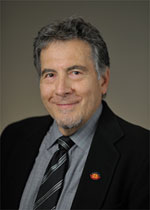NIH has just announced a significant change in its policy for resubmission applications.
Effective immediately, for application due dates after April 16, 2014, following an unsuccessful resubmission (A1) application, applicants may submit the same idea as a new (A0) application for the next appropriate due date. NIH will not assess the similarity of the science in the new (A0) application to any previously reviewed submission when accepting an application for review.
NIH’s policy for accepting overlapping applications remains in effect (see NOT-OD-09-100), so it will not accept duplicate or highly overlapping applications under review at the same time. This means that NIH will not review:
- A new (A0) application that is submitted before issuance of the summary statement from the review of an overlapping resubmission (A1) application.
- A resubmission (A1) application that is submitted before issuance of the summary statement from the review of the previous new (A0) application.
- An application that has substantial overlap with another application pending appeal of initial peer review (see NOT-OD-11-101).
The NIH time limit for accepting resubmission (A1) applications remains in effect, as well (see NOT-OD-12-128 and NOT-OD-10-140). NIH will not accept a resubmission (A1) application that is submitted later than 37 months after submission of the new (A0) application that it follows.
Also remaining in effect is the NIH policy for new investigator R01 resubmission deadlines, described in NOT-OD-11-057.
Background and details on the new resubmission policy are in NIH Guide NOT-OD-14-074 and a blog post by NIH’s Sally Rockey.


 Clifton “Clif” Poodry, Ph.D., director of the NIGMS Division of Training, Workforce Development, and Diversity, retired earlier this month. Although he’s left federal service, Clif is continuing to pursue his long-held interest in improving science education as a senior fellow at the Howard Hughes Medical Institute.
Clifton “Clif” Poodry, Ph.D., director of the NIGMS Division of Training, Workforce Development, and Diversity, retired earlier this month. Although he’s left federal service, Clif is continuing to pursue his long-held interest in improving science education as a senior fellow at the Howard Hughes Medical Institute. I am pleased to tell you that Judith Greenberg has agreed to serve as acting deputy director of NIGMS while a search for a permanent deputy director takes place. A news announcement on her appointment is posted at http://www.nigms.nih.gov/News/Results/pages/
I am pleased to tell you that Judith Greenberg has agreed to serve as acting deputy director of NIGMS while a search for a permanent deputy director takes place. A news announcement on her appointment is posted at http://www.nigms.nih.gov/News/Results/pages/